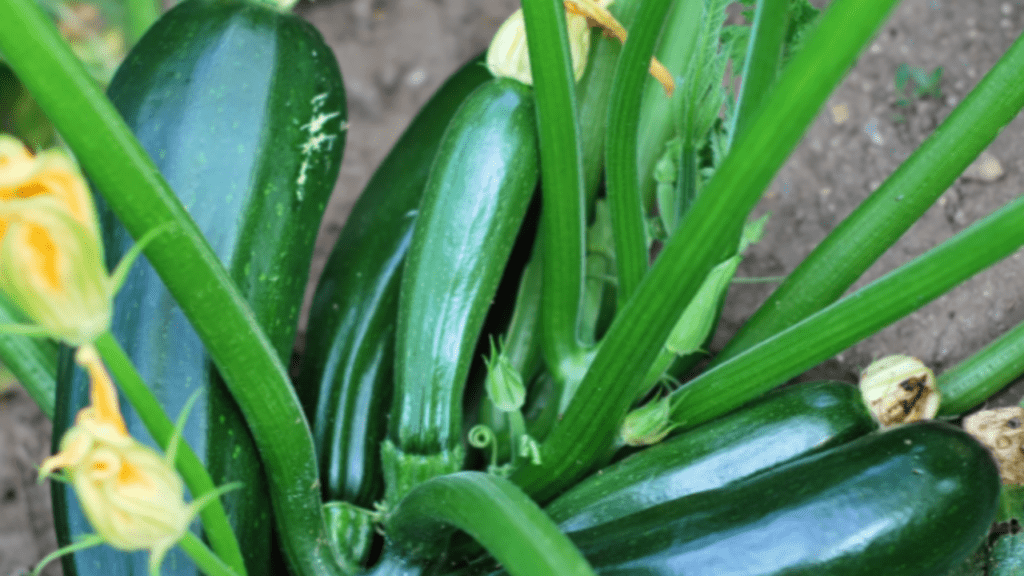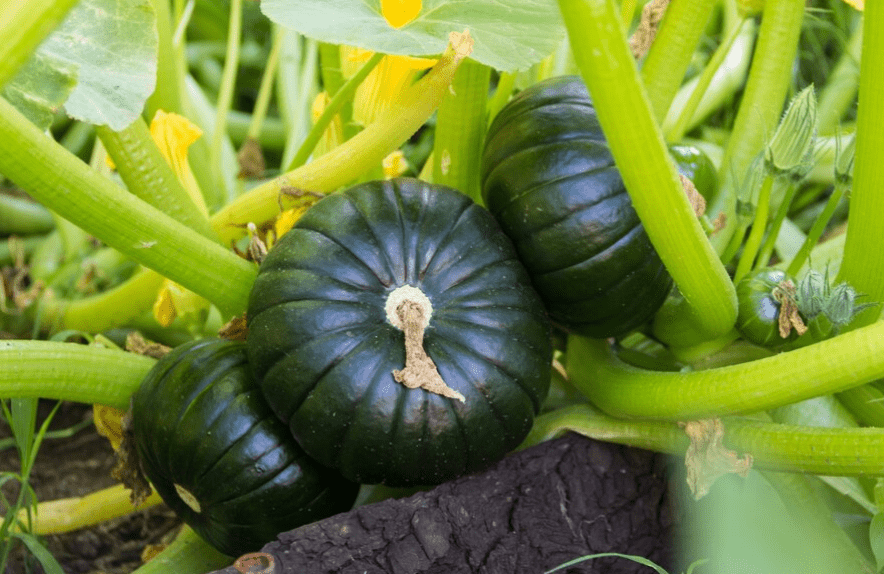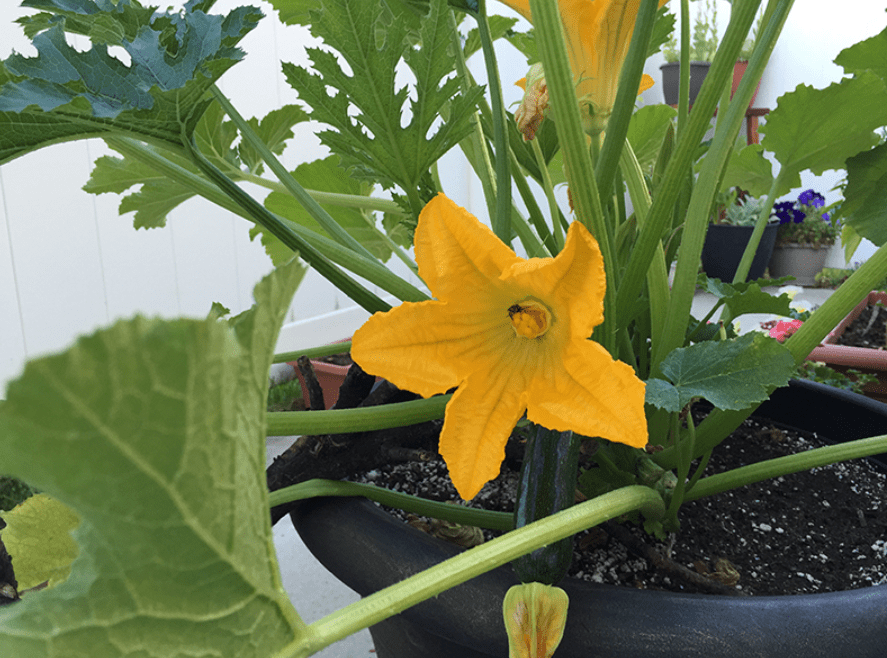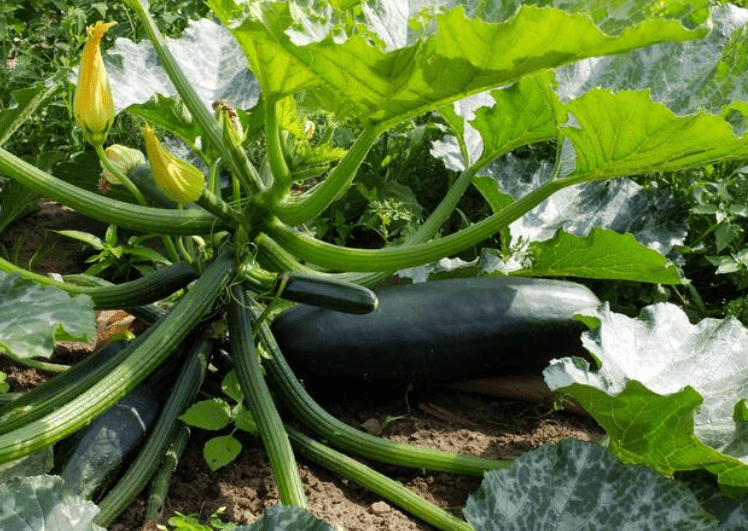
Black Beauty Zucchini Plant Care Guide: Tips for Successful Growth and Harvest
Welcome to our Black Beauty Zucchini Plant Care Guide! Whether you’re an experienced gardener or just starting out, this post is packed with expert tips to help you ensure successful growth and a bountiful harvest for your zucchini plants. We’ll cover everything from planting to harvesting, so you can enjoy delicious zucchinis all season long. Let’s get started!
Zucchinis are a versatile and nutritious vegetable that can be easily grown in home gardens. By growing Black Beauty Zucchini in your garden, you can enjoy a bountiful harvest of this delicious and healthy vegetable. Not only does growing this variety at home ensure that you have access to fresh zucchinis, but it also allows you to control the growing conditions and avoid harmful pesticides or chemicals. Additionally, growing your own zucchinis is a sustainable and cost-effective way to add fresh produce to your meals. With the right care and attention, you can enjoy a successful and abundant zucchini harvest in your own backyard.
Black Beauty Zucchini is a popular variety of zucchini that has a rich, dark green color and a smooth, tender texture. It is a versatile vegetable that can be used in a variety of culinary dishes, such as sautéing, grilling, baking, and even pickling. The skin of the Black Beauty Zucchini is thin and does not need to be peeled before cooking, making it convenient to use in recipes. This variety of zucchini is also high in vitamins and minerals, making it a healthy addition to any meal.
When it comes to culinary uses, Black Beauty Zucchini can be used in a variety of dishes. It can be sliced and grilled, sautéed with other vegetables, or even spiralized to make zucchini noodles. You can also use it in breads and muffins for a healthy and delicious twist. Its mild flavor makes it a versatile ingredient that can be incorporated into both savory and sweet dishes.
In addition to its culinary uses, Black Beauty Zucchini also offers a range of health benefits. It is low in calories and high in fiber, making it a great choice for those looking to maintain a healthy weight and improve digestion. It also contains vitamins A and C, as well as potassium, which are essential for overall health and well-being.
Overall, Black Beauty Zucchini is a versatile and nutritious vegetable that can be easily grown at home. Whether you enjoy it grilled, sautéed, or baked, incorporating this variety of zucchini into your meals can add a delicious and healthy twist to your dishes.
Table of Contents
ToggleUnderstanding Black Beauty
Zucchini
Black Beauty Zucchini is a versatile and nutritious vegetable that can be incorporated into a variety of dishes. Its mild flavor makes it a great addition to both savory and sweet recipes, and it can be used in salads, stir-fries, and even breads and muffins. In addition to its culinary uses, Black Beauty Zucchini is also packed with health benefits. It is low in calories and high in fiber, making it a great choice for those looking to maintain a healthy weight and improve digestion. It also contains vitamins A and C, as well as potassium, which are essential for overall health and well-being. Whether you enjoy it grilled, sautéed, or baked, adding Black Beauty Zucchini to your meals can add a delicious and nutritious twist to your dishes. Plus, it’s easy to grow at home, making it a convenient and healthy option for your meals.

Description of the Black Beauty Zucchini plant (Cucurbita pepo).
The Black Beauty Zucchini plant, scientifically known as Cucurbita pepo, is a versatile and nutritious vegetable. It can be sliced and grilled, sautéed with other vegetables, or spiralized to make zucchini noodles. Additionally, it can be used in breads and muffins for a healthy and delicious twist due to its mild flavor, making it a versatile ingredient for both savory and sweet dishes. In terms of health benefits, Black Beauty Zucchini is low in calories and high in fiber, making it a great choice for those looking to maintain a healthy weight and improve digestion. It also contains essential vitamins A and C, as well as potassium, which are important for overall health and well-being. Overall, Black Beauty Zucchini is a versatile and nutritious vegetable that can be easily grown at home and can add a delicious and healthy twist to your dishes. Whether you enjoy it grilled, sautéed, or baked, incorporating this variety of zucchini into your meals can be a great addition to your diet.
Varietal characteristics including size, color, and flavor.
The Black Beauty Zucchini is a type of zucchini that is known for its dark green, almost black, outer skin. It is typically medium in size, about 6 to 8 inches long, and is known for its mild, slightly sweet flavor. The flesh of the zucchini is creamy white in color and has a tender texture, making it versatile for cooking in a variety of dishes. Its size and flavor make it a great choice for grilling, sautéing, or baking, and it can be used in both savory and sweet recipes. Its color and flavor make it a unique and delicious addition to any meal.
Historical background and popularity in modern gardening.
The Black Beauty Zucchini has a rich historical background and remains popular in modern gardening. This variety of zucchini has been cultivated for centuries, with its origins tracing back to Italy. It has since become a staple in many home gardens and is widely available in farmer’s markets and grocery stores. Its popularity in modern gardening is due to its ease of cultivation and versatility in cooking. The Black Beauty Zucchini is known for its high yield and resistance to disease, making it a favorite among gardeners. Additionally, its unique color and flavor make it a popular choice for both culinary and ornamental purposes. Its historical significance and modern popularity make it a valuable addition to any garden.
Choosing the Right Location
Ideal growing conditions for Black Beauty Zucchini.

The Black Beauty Zucchini thrives in warm, sunny conditions, making it important to choose the right location for planting. It’s important to select a spot in your garden that receives at least 6-8 hours of direct sunlight each day. The soil should be well-draining and rich in organic matter, such as compost or aged manure. It’s also beneficial to plant the zucchini in a location where it will be protected from strong winds, as the large leaves can be easily damaged. Additionally, providing a trellis or support system for the zucchini vines can help promote healthy growth and allow for better air circulation. By choosing the right location and providing optimal growing conditions, you can ensure a bountiful harvest of delicious Black Beauty Zucchini.
Sunlight requirements and soil preferences.
The Black Beauty Zucchini thrives in warm, sunny conditions, making it important to choose the right location for planting. It’s important to select a spot in your garden that receives at least 6-8 hours of direct sunlight each day. The soil should be well-draining and rich in organic matter, such as compost or aged manure. It’s also beneficial to plant the zucchini in a location where it will be protected from strong winds, as the large leaves can be easily damaged. Additionally, providing a trellis or support system for the zucchini vines can help promote healthy growth and allow for better air circulation. By choosing the right location and providing optimal growing conditions, you can ensure a bountiful harvest of delicious Black Beauty Zucchini.
Container gardening options for limited spaces.
Container gardening is a great option for people with limited space. You can grow Black Beauty Zucchini in containers on a deck, patio, or balcony, as long as they receive enough sunlight. Choose a container that is at least 24 inches deep and has good drainage. Fill the container with a high-quality potting mix and plant the zucchini seeds or seedlings. Make sure to water the plants regularly and provide support for the vines as they grow. With the right care, you can still enjoy a bountiful harvest of delicious zucchini even in a limited space.
Preparing for Planting
Best time to plant Black Beauty Zucchini.
The best time to plant Black Beauty Zucchini is in late spring, once the soil has warmed up and the danger of frost has passed. This typically falls around mid to late May, depending on your location. It’s important to choose a sunny location with well-drained soil for planting. You can also start seeds indoors about 3-4 weeks before the last frost date and transplant them once the weather warms up. Be sure to space the seeds or seedlings about 3-4 feet apart to allow for proper growth and air circulation. It’s also important to provide a trellis or support system for the zucchini vines to promote healthy growth and prevent them from sprawling. With the right preparation and timing, you can enjoy a successful harvest of Black Beauty Zucchini.
Soil preparation techniques such as composting and fertilization.
When it comes to planting Black Beauty Zucchini, the key to a bountiful harvest lies in proper soil preparation. One of the most effective soil preparation techniques is composting. Adding compost to your soil can improve its structure, drainage, and nutrient content, providing an ideal environment for zucchini plants to thrive. Composting also introduces beneficial microorganisms that help break down organic matter and release essential nutrients for plant growth.
In addition to composting, fertilization is another important aspect of soil preparation for growing Black Beauty Zucchini. Using a balanced fertilizer with a higher nitrogen content can help promote healthy leaf and stem growth, while a fertilizer with a higher phosphorus content can encourage strong root development and fruit production.
By incorporating these soil preparation techniques, you can create optimal growing conditions for your Black Beauty Zucchini plants, leading to a successful and bountiful harvest of delicious zucchini, even in a limited space.
Tips for starting seeds indoors versus direct sowing.
When it comes to starting seeds for Black Beauty Zucchini, you have the option of starting them indoors or direct sowing them into the garden. Starting seeds indoors allows you to get a head start on the growing season and gives you more control over the environment in which the seeds germinate. To start seeds indoors, you will need seed trays or small containers, a seed starting mix, and a warm, well-lit area. Direct sowing, on the other hand, involves planting the seeds directly into the garden soil once the danger of frost has passed. This method can be simpler and more convenient, as it eliminates the need for transplanting seedlings. Whichever method you choose, it’s important to keep the soil consistently moist and provide adequate sunlight for the seedlings to thrive. By following these tips for starting seeds indoors versus direct sowing, you can ensure a successful and productive harvest of Black Beauty Zucchini.
Planting and Care

Step-by-step guide to planting Black Beauty Zucchini seeds or seedlings.
- Choose a sunny location with well-drained soil for planting your Black Beauty Zucchini seeds or seedlings.
- Prepare the soil by adding compost or other organic matter to improve fertility and drainage.
- If starting seeds indoors, plant them in seed trays or small containers filled with seed starting mix. Keep the soil consistently moist and provide adequate sunlight for the seeds to germinate.
- If direct sowing, plant the seeds or seedlings in the prepared soil, spacing them about 24-36 inches apart.
- Water the seeds or seedlings regularly, ensuring that the soil remains consistently moist but not waterlogged.
- Mulch the soil around the plants to help retain moisture and prevent weed growth.
- Monitor the plants for pests and diseases, and take appropriate measures to control them if necessary.
- Harvest the zucchinis when they are 6-8 inches long, as they will be at their most tender and flavorful at this stage.
By following these steps for planting and caring for Black Beauty Zucchini, you can enjoy a successful and bountiful harvest of delicious zucchinis.
Proper spacing and watering recommendations.
When starting seeds indoors, it’s important to plant them in seed trays or small containers filled with seed starting mix. Keep the soil consistently moist and provide adequate sunlight for the seeds to germinate. If direct sowing, plant the seeds or seedlings in the prepared soil, spacing them about 24-36 inches apart. It’s crucial to water the seeds or seedlings regularly, ensuring that the soil remains consistently moist but not waterlogged. Adding mulch to the soil around the plants can help retain moisture and prevent weed growth. Additionally, it’s important to monitor the plants for pests and diseases, and take appropriate measures to control them if necessary. Finally, when it’s time to harvest the zucchinis, it’s best to do so when they are 6-8 inches long, as they will be at their most tender and flavorful at this stage. By following these spacing and watering recommendations, you can enjoy a successful and bountiful harvest of delicious zucchinis.
Mulching strategies to retain moisture and prevent weeds.
When it comes to mulching strategies for your garden, there are a few key things to keep in mind. First, it’s important to choose the right type of mulch for your specific plants and soil type. Organic mulches, such as wood chips, straw, or compost, can help retain moisture and prevent weed growth, while also adding nutrients to the soil as they break down. It’s also important to apply a thick layer of mulch, usually around 2-3 inches, around the base of your plants to effectively retain moisture and suppress weed growth. Additionally, be sure to leave a small gap between the mulch and the base of the plant to prevent any potential rot or disease. Regularly checking and replenishing the mulch layer as needed will ensure that your plants have the best chance of thriving. By implementing these mulching strategies, you can maintain a healthy and vibrant garden while conserving water and minimizing weed competition.
Cooking and Enjoying Black Beauty Zucchini
Black Beauty zucchini is a delicious and versatile vegetable that can be enjoyed in a variety of dishes. When cooking Black Beauty zucchini, you can try sautéing it with garlic and herbs for a simple and flavorful side dish. You can also grill or roast the zucchini to bring out its natural sweetness and enhance its texture. Another popular way to enjoy Black Beauty zucchini is by adding it to pasta dishes, salads, or stir-fries. Additionally, you can use it to make zucchini bread, muffins, or fritters for a delicious and nutritious treat. With its mild flavor and tender texture, Black Beauty zucchini is a great addition to any meal. Plus, it’s packed with essential nutrients like vitamin C, vitamin A, and fiber. So, whether you’re cooking it as a side dish or incorporating it into a main course, Black Beauty zucchini is a healthy and delicious option for any meal.
In conclusion, caring for your black beauty zucchini plants involves regular watering, proper fertilization, and pest control. It’s important to monitor the plants for any signs of disease or stress and take appropriate action to address any issues. Additionally, proper spacing and sunlight are crucial for successful growth and a bountiful harvest. By following these tips and staying attentive to the needs of your plants, you can enjoy a thriving zucchini garden. Happy gardening!
Frequently asked questions And Answer
Black Beauty Zucchini plants need at least 6-8 hours of direct sunlight every day for successful growth and fruit production.
It’s important to keep the soil consistently moist, so water your zucchini plant deeply 1-2 times per week, depending on the weather and soil conditions.
Black Beauty Zucchini is best harvested when the fruits are 6-8 inches long and still tender. Regular harvesting encourages more fruit production.
Regularly inspect your zucchini plant for signs of pests and diseases, and consider using organic pest control methods such as neem oil or insecticidal soap. Proper spacing and good air circulation can also help prevent disease.
Yes, Black Beauty Zucchini can be grown in a large container with good drainage. Just make sure to provide support for the plant as it grows and consider using a trellis to save space.
You can encourage pollination by planting pollinator-friendly flowers nearby, or by gently shaking the flowers to help distribute pollen.
Overwatering, overcrowding, and not harvesting the zucchinis at the right time are common mistakes to avoid. It’s also important to watch out for powdery mildew, a common disease that can affect zucchini plants.
